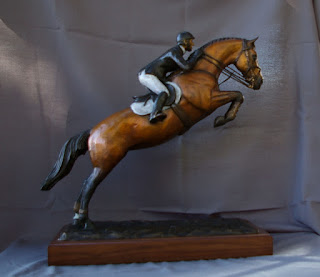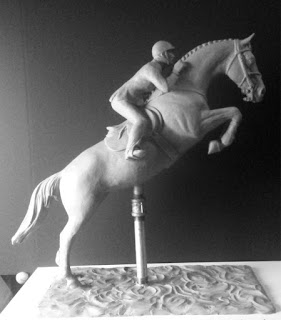I find the different patinas that are possible in bronze sculpture to be amazing. The appropriate application of heat and chemicals to the surface of a bronze sculpture cause chemical reactions in the metal which can bring out a myriad of gorgeous colors. The patina helps to bring a bronze horse sculpture to life. It also serves to seal and protect the surface of the metal.
Above is a Silver Nitrate patina on an Arabian horse bust. Patinas on this page are created by patina artist Laurie Tidwell.
It may well surprise you to learn that the patina on this pinto Arabian bust is not paint, but layers of different chemical reactions which change the color of the actual metal itself.
Patination is the process of applying layers of color to the surface of a bronze sculpture. The patina artist creates this color by applying chemicals on the sculpture with heat. Patina is also the natural reaction of bronze to atmospheric conditions, such as chemicals and humidity and even man made environmental conditions such as water from sprinklers. The artist or the foundry will protect the patina with coats of wax or a lacquer to deter change in the patina. Because atmospheric elements constantly work on bronze surfaces after leaving the foundry, certain steps can be taken by the art collector to help preserve the original patina of the bronze sculpture.
Bronze is a very durable metal. Your bronze sculpture can last for centuries! The patina is the most delicate part of your bronze. Regular application of a wax coating to a bronze sculpture will help to keep the elements sealed out and prevent color changes in the patina.
Many bronze collectors prefer to let the wax coating wear thin and enjoy the natural reaction and aging process of the patina especially on outdoor bronze sculptures.
Wise collectors consult with a patina artist, foundry, or art conservator regarding any major changes in your bronze sculpture's patina.























